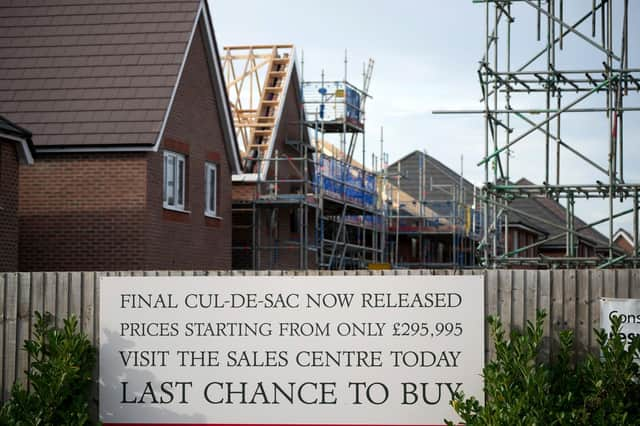Affordable social housing must be integrated into communities, not isolated on the margins – Tom Norris


Today, we’re emerging from one crisis while bracing ourselves for another. A central concern for many of us now is what the legacy of these crises will be.
Homes and communities, as a central part of the very fabric of our society, will have a major role to play in how we look back on this time.
Advertisement
Hide AdAdvertisement
Hide AdThey shape our relationships, how we live our lives and our perceived status. A topic of real concern, for me, is how our perceived status is shaped by where we live. Earlier this year, I highlighted the stigma which exists in relation to social housing, with social tenants being viewed differently to those who rent privately or own their own homes.
Today in Scotland, housing providers and their customers are facing significant obstacles. The dual crises of the pandemic and the rising cost of living have only exacerbated this.
However, I fundamentally believe that we need a response driven by ambition and a desire for positive change. There is a broad consensus in Scotland which recognises the need for more affordable homes, with 85 per cent of respondents to our recent survey saying they believe that the cost-of-living crisis means that Scotland needs to build more social homes.
There’s strong evidence to suggest that building more social and affordable homes leads to wider positive social outcomes. For example, the countries with the highest levels of social homes (Denmark, the Netherlands and Austria) also feature in the top ten for life quality.
I believe, passionately, that the homes we build also provide an opportunity to live in a community which is built around the needs of those who live there. As demand for social and other housing increases, we have a golden opportunity to completely reset the way social housing is commonly perceived and set a new standard for the success of our communities.
An immediate priority must be to build more homes. While these must be built at pace, it’s imperative that they are good quality homes that exist within connected communities.
Isolating affordable homes from the rest of the community only serves to perpetuate social exclusion and economic inequality.
Instead, we must create affordable homes which fit seamlessly into existing communities and complement existing places. In practical terms, this means we need to stop confining social and affordable homes to a separate, often less desirable, corner of a larger development.
Advertisement
Hide AdAdvertisement
Hide AdInstead, these homes and the people who live in them should be integrated throughout the development so that they are in the heart of the community. This is just one step we need to take if we’re serious about tackling stigma and supporting community cohesion.
Achieving this positive change requires investment and a forward-thinking mindset with bold ambition to strengthen communities and support them to be resilient to future challenges.
We also need to commit to further collaboration. I’m always keen to learn from others while both engaging in and facilitating the sharing of best practice.
By challenging ourselves to constantly innovate and improve, I know we can build thriving communities right across Scotland.
Tom Norris is managing director of Places for People Scotland
Comments
Want to join the conversation? Please or to comment on this article.
